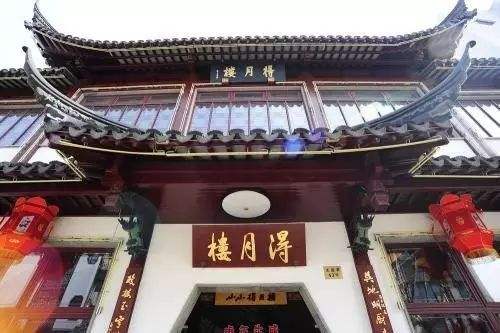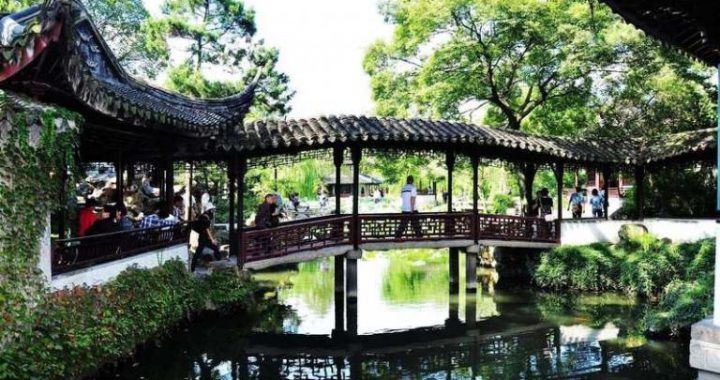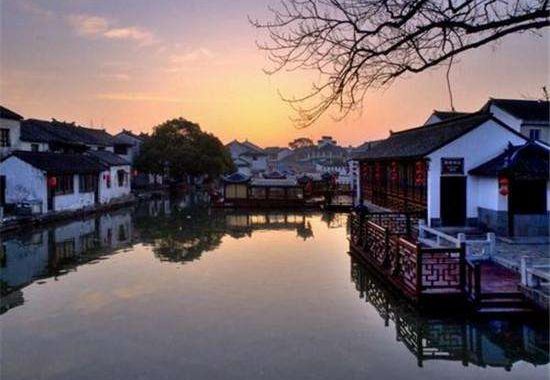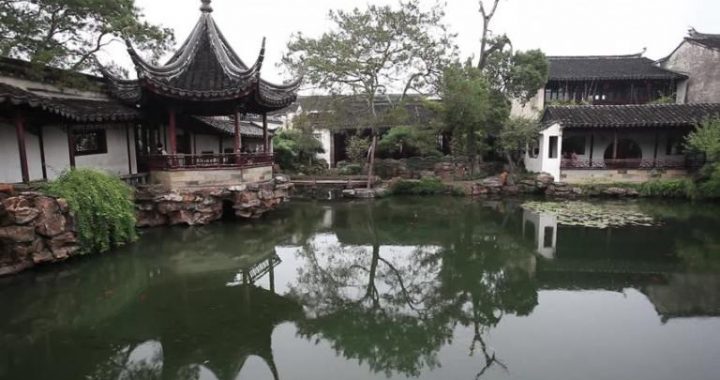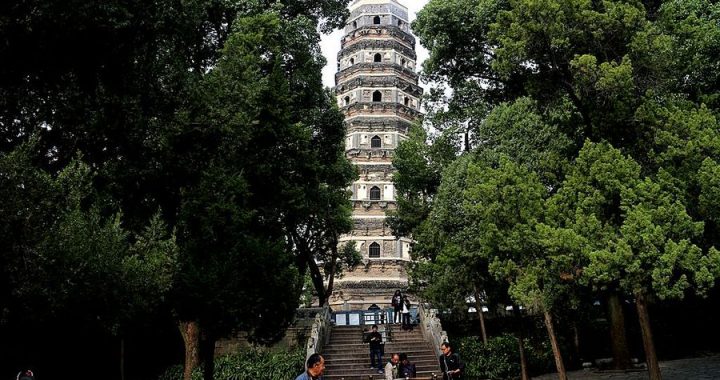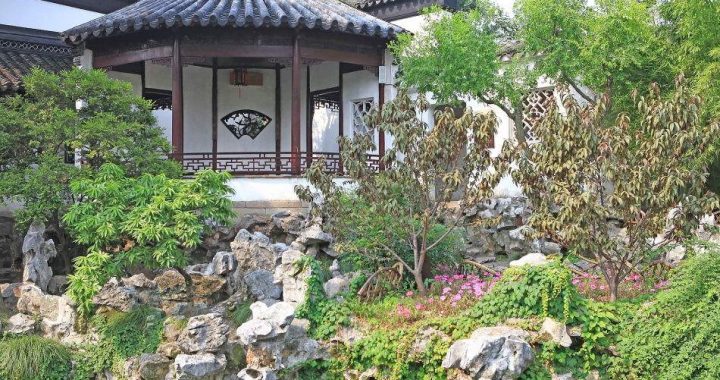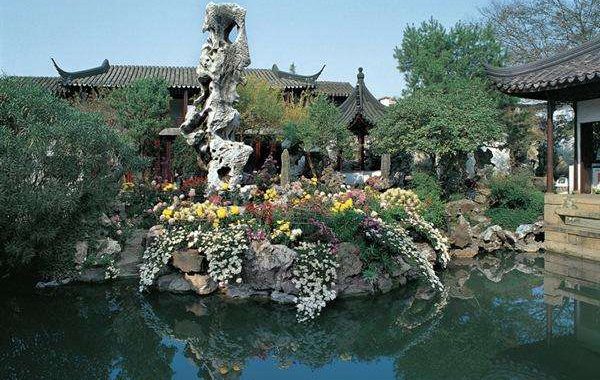A Sense of Space
4 min readGardens in the south are mostly small in size. To evoke a sense of space, the use of “borrowing a distant view”is of special significance. It enables a visitor to look outside the garden to enjoy a new and greater vista, and to acquire a feeling of spaciousness, despite being in a physically small space.
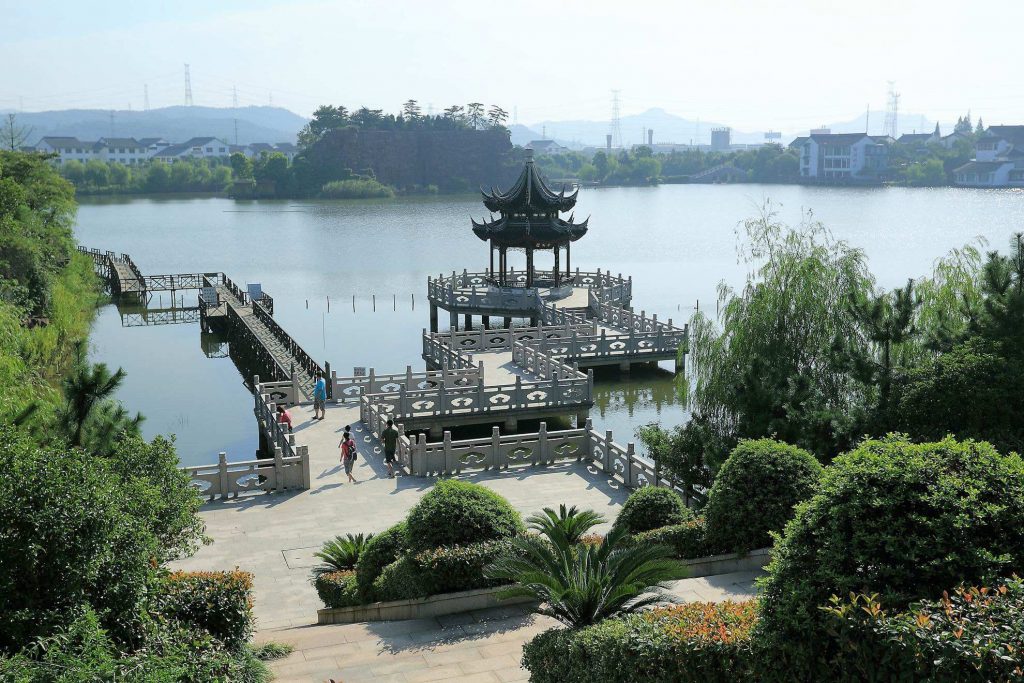
A comer of Yipu carden in suzhou, with white stonesandared tree setting each otherof Windows are very important in this aspect. In Chinese horticulture, windows are always designed in the shape of a fan and referred to as “convenience windows.”Through the windows, visitors can view the picturesque bamboo groves and mountains outside. Joyous Longevity Hall, in the Summer Palace in Beijing, has windows on all its four walls, with its surrounding walls facing Kunming Lake. Each window view becomes the equivalent of a vivid painting. In fact, garden designers bestow these windows with another name-“absorbent windows,”through which the sights of different places interact, thus setting the landscape of the garden in motion. More interestingly, through the windows, visitors may see different views at different angles, and thus the composition of the garden becomes infinitely enlarged.
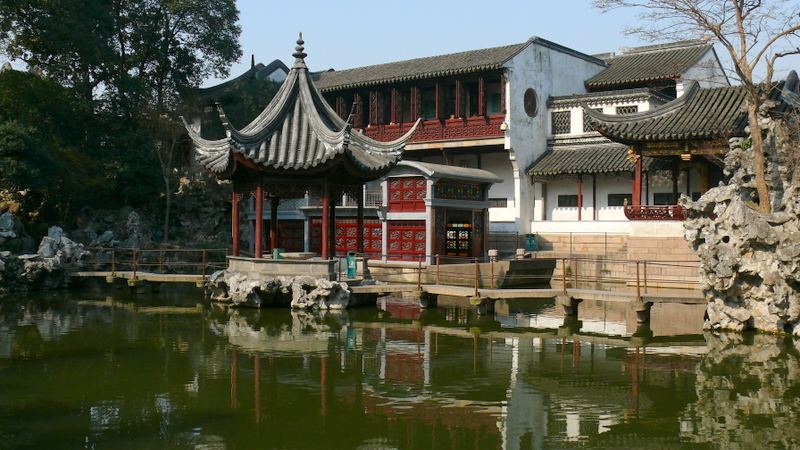
An undulating wallin xiyuan Garden, Suzhou
The idea of “borrowing a distant view”is actually applied not only to windows, but also to all the elements of the garden, such as houses, pavilions and pagodas.A horizontal board in the Summer Palace bears the inscription,”The colors of the mountain and the light of the lake gather in this building.”This is saying that the building has absorbed a panoramic view of the landscape all around,a good example of “borrowing a distant view.”
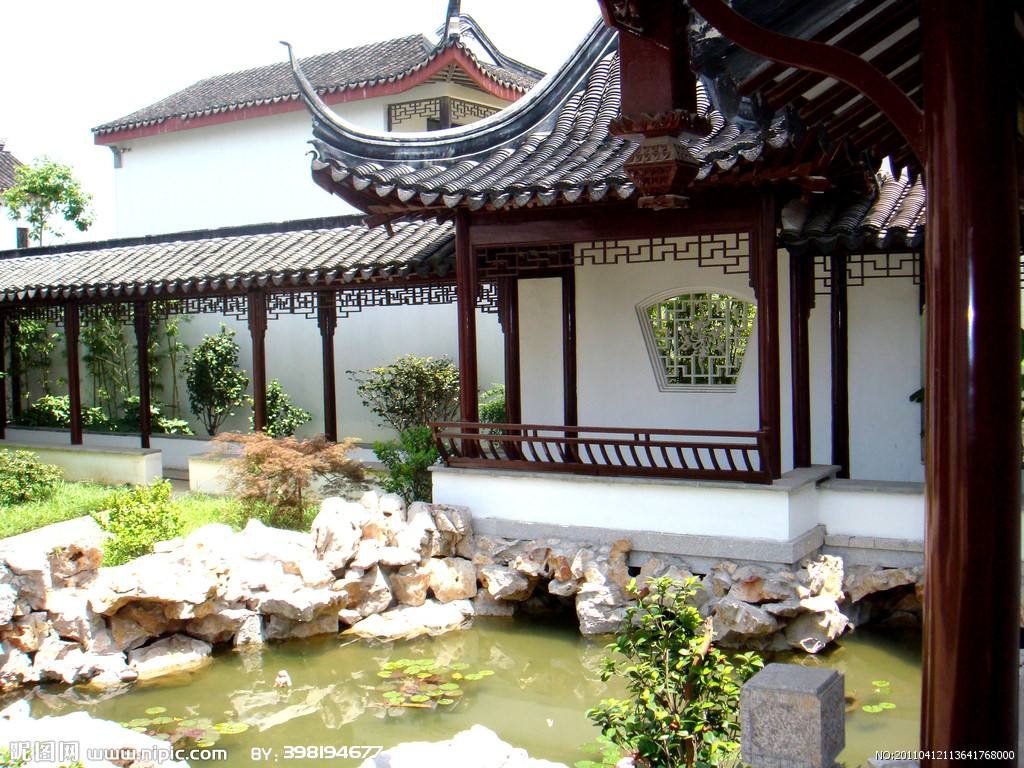
Pavilions are an integrated part of Chinese gardens. Their function is to divert visitors’ attention from a view in a limited space toward a view out into an infinite space. Standingin a pavilion,a visitor can look far into the distance to enjoy the beautiful sights of the world. As a Yuan-dynasty (1206-1368) poem elucidates,”The boundless landscape /Converges into one pavilion.”In the Summer Palace in Beijing, there is a pavilion named “Touring Througha Painting,”which does not mean that the pavilion itself is a painting, but that the scene outside the pavilion is like a painting. Therefore, once you enter the pavilion, you enter the bigger painting.
Aglimpse of Zhuozheng Garden: white wals and blacktiles amidst a stretch of green The Canglang Pavilion Garden in Suzhou is famous for its pavilion. Atop a hill, the Canglang Pavilion seems to have the ability to command winds and clouds. Inside the pavilion, visitors capture a bird s-eye-view of the beautiful scenery all around and below.A couplet inscribed on the pillars of the pavilion reads,”Invaluable are the gentle breeze and the bright moon; lovable are the distant mountains and the nearby rivers.”Sitting in the pavilion and enjoying”the distant mountains and the nearby rivers”can soothe the souls of visitors-the ideal of Chinese landscapists.
To enhance a sense of space, Chinese garden designers have adopted a variety of methods to arrange, organize and create space, such as “borrowing scenery,””dividing scenery,”
“separating scenery,”and even “borrowing scenery with a mirror.”
“Borrowing scenery”is one of the basic principles that Chinese landscapists generally adopt. For example, the pagoda atop Jade Spring Mountain appears to be part of the landscape of the Summer Palace; from the Guanyun Building in Suzhou’s Liuyuan Garden, one can enjoy the scenery of Tiger Hill Park in the distance; the Liangyi Pavilion built on an artificial hill in Zhuozheng Garden commands a beautiful landscape outside the garden’s wall. All these are good examples of “borrowing scenery,”and all of them successfully break through the barrier of walls to integrate inward the landscapes outside.
Actually, the names of many buildings in Chinese gardens reflect this principle of “borrowing scenery,”such as “Smoke and Rain Hall,””Hall for Listening to the Rain,””Moon and Wind Pavilion,””Lotus and Wind Pavilion,”and “Flying Fountain Pavilion,”to name only a few.
These names suggest that these sites function to bring natural landscapes closer for the appreciation of visitors.
The Long Corridor in the Summer Palace divides the landscape into two parts: one being the natural beauty of Kunming Lake; the other, the architectural complex representing human interests.A visitor enjoys the different scenery on the two sides at the same time; this is called “dividing scenery.”
A fine example of the application of the principle “separating scenery”is the Harmony Garden in the Summer Palace. It is a garden within a garden, that is, an independent space in itself yet also a space dependent on a larger one. Chinese landscapists excel at using this theory because they believe that the more separated a space is, the more spacious it becomes, and the richer the feelings it evokes in visitors.
Hanging a mirror opposite a window to absorb the outside scenery is called “borrowing scenery with a mirror.”By using this method, the real world turns into a virtual world.A pool or lake in a garden also serves this purpose.
To summarize, whatever the methods used, every effort is made to achieve the purpose of giving visitors a sense of space in the garden. This is an important and specialized field to understand, if one wants to truly appreciate Chinese aesthetics.

